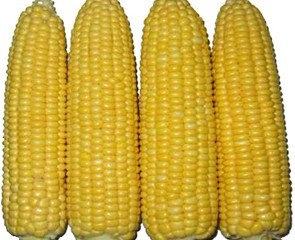Maize known in many English-speaking countries as corn or mielie/mealie, is a grain domesticated by indigenous peoples in Mesoamerica in prehistoric times. The leafy stalk produces ears which contain seeds called kernels. Though technically a grain, maize kernels are used in cooking as a vegetable or starch.
Starch from maize can also be made into plastics, fabrics, adhesives, and many other chemical products. The corn steep liquor, a plentiful watery byproduct of maize wet milling process, is widely used in the biochemical industry and research as a culture medium to grow many kinds of microorganisms.
Maize stems superficially resemble bamboo canes and the internodes can commonly be 7 inches. Maize has a distinct growth form; the lower leaves being like broad flags, generally 50–100 centimetres long and 5–10 centimetres wide (2–4 ft by 2–4 in).
| Catalog | Product Name | CAS Number | Manual |
|---|---|---|---|
| CFN99916 | Beta-Sitosterol | 83-46-5 | |
| CFN98117 | Beta-Carotene | 7235-40-7 | |
| CFN90067 | Riboflavine | 83-88-5 | |
| CFN90234 | Zeaxanthin | 144-68-3 | |
| CFN99911 | D-(+)-Xylose | 58-86-6 | |
| CFN99545 | L-Rhamnose | 6155-35-7 | |
| CFN99100 | Succinic acid | 110-15-6 | |
| CFN99716 | Palmitic acid | 57-10-3 | |
| CFN93165 | Stearic Acid | 57-11-4 | |
| CFN94800 | Oleic acid | 112-80-1 | n/a |
| CFN93168 | Linoleic acid | 60-33-3 |
A unique collection of 21 natural compounds from Citrus maxima (Burm.) Merr. cv. Wentan
A unique collection of 21 natural compounds from Humulus lupulus
A unique collection of 33 natural compounds from Glycine max (L.) merr
A unique collection of 24 natural compounds from Lycium barbarum
A unique collection of 25 natural compounds from Evodia rutaecarpa (Juss.) Benth.





